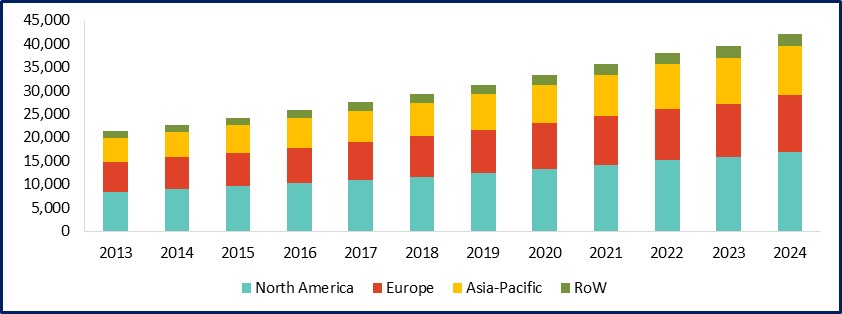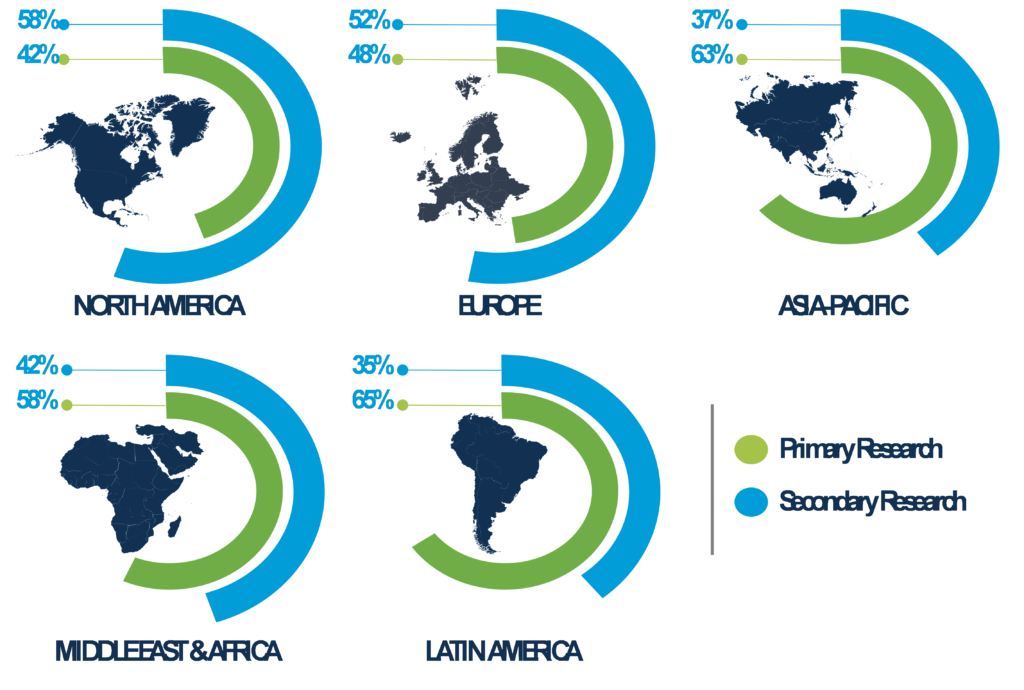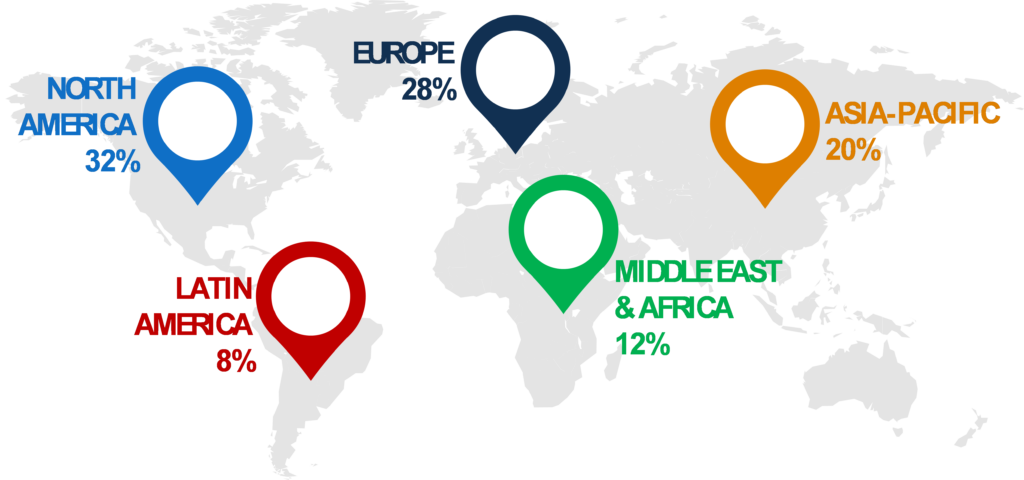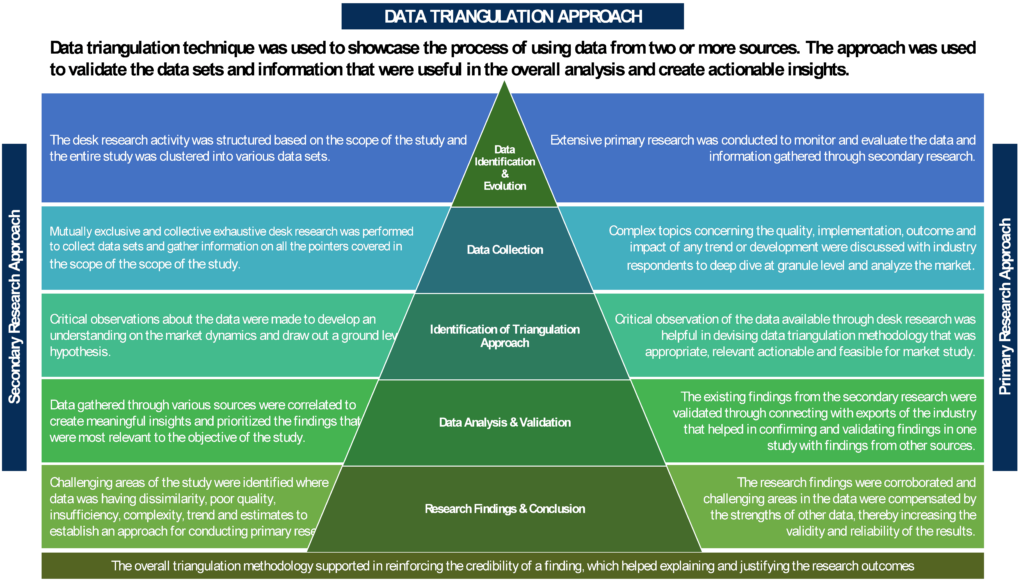Wound Care Market

Global Wound Care Market by product (advanced wound care products, wound closure products and traditional wound care products), by wound type (acute wound and chronic wound) by application (surgical wound, ulcer, and burn), by end user (inpatient and outpatient facilities) Size, Share, Development, Growth and Demand Forecast, 2018-2024.
- Published Date: August 2018
- Report ID: BWC1813
- Available Format: PDF
- Page: 158
Report Overview
Global Wound Care Product Market: Outlook
Global Wound Care Product market report provides analysis for the period 2013 – 2024, in the forecast period from 2018-2024. The market study reveals that the global wound care product market is projected to grow with a CAGR of over 6.24% in terms of value during the anticipated timeframe. The market growth is influenced by numerous reasons like the growing aged population, an increasing volume of surgeries, an increase in road accidents. Furthermore, the increase in burn cases across the globe and increasing incidence of chronic wounds is also driving the growth of the market globally.
The market overview section of the report demonstrates market dynamics such as drivers, restraints, and opportunities that talks about the current nature and future scenario of the said market, key market indicators, end-user adoption analysis. Further, key market indicators included in the report provide the significant factors which are capable to define the market position of global wound care product.
Global wound care Product Market: Scope of the Report
On the basis of the type of products, the global wound care market is segmented into advanced wound care products, wound closure products and traditional wound care products. Based on the type of wound, the global wound care market is further segmented into the acute wound and chronic wound. Based on application, the global wound care market is further segmented into surgical wound, ulcer, and burn. Based on the end user, the global wound care market is further segmented into inpatient and outpatient facilities. Inpatient facilities had a significant share among the end users and it also accounts for faster growth. Finally, the report covers the analysis of these segments across based North America, Europe, Asia-Pacific and Rest of the World along with the qualitative analysis for market estimates that boosts the growth of the global skincare product market during the forecast period. Among different regions, the largest market is North America, while the fastest growing market for wound care is Asia-Pacific.
The report also highlights the competitive landscape of the global wound care product market that includes the company overview, the products & offerings, strategic decisions taken by the company, launch of new products and financial highlights.
Global wound care Product Market: Key Findings of the Report
According to BlueWeave Consulting, the key findings of the report “Global Wound Care Market Size, Share, Development, Growth and Demand Forecast to 2024” are:
·
North America led the global wound care market
in 2017 and it is expected to grow with a CAGR over 6.33% during the
anticipated period
·
The U.S. held the largest share in the North
American wound care market in 2017 and it is expected to grow with a CAGR over
7% during the period 2018–2024
·
Based on type of product, advanced wound care
product generated the largest revenue in the global wound care market in 2017
and it is expected to exhibit the fastest growth during the estimated period
·
Chronic wound accounted for the major share in
the global wound care market in 2017 and it is expected to grow with a CAGR of
6.8% during the period 2018 – 2024
·
Surgical wound segment was the largest
application area of wound care in 2017 and it is expected to exhibit the
fastest growth during the forecast period
·
Based on end user, inpatient facilities
generated largest revenue in the global wound care market in 2017 and it is
expected to exhibit the fastest growth during the period 2018–2024
GLOBAL Wound care product market, revenue forecast, USD(Million),2013 – 2024

Global Wound Care Product Market: Research Methodology
Extensive secondary research was conducted using paid data sources including Bloomberg, Factiva, Capital IQ, OneSource, and Hoovers. Additionally, several publicly-available data sources were used including journals, statistics articles, and industry associations. These data sources were used to gather relevant information to develop an understanding on the global wound care product market. The research was conducted covering the desk research and primary research. Data sources used for primary research included online forums and blogs, CATI/CAWI, CAPI interviews, and video conferences. Additionally, interviews were conducted through connecting with various industry respondents including C-level executives, directors, divisional heads, regional heads, expert consultants, and independent consultants. The primary research was conducted to gain market insights from industry respondents and validate the gathered information through desk research.
Global wound care Product Market: Research Summary
The global wound care market is growing at a significant rate owing to increased utilization of wound care products for the treatment of chronic wounds, surgical wounds, burns, and ulcers. These products accelerate the wound healing process and alleviate the patient’s condition. Various wound care products available in the market include advanced wound care, traditional wound care, and wound closure products. The utilization of wound care products are increasing due to the growing geriatric population, increasing cases of diabetes and obesity, along with an increase in the volume of surgeries. In addition to that, the increase in the number of road accidents and burn cases are also leading to their amplified utilization. However, the high cost of wound care products and the requirement of high technical assistance act as restraints in the growth of the wound care market.
U.S. was the largest country for the global wound care market which holds over 34.1% share in 2017 and is expected to continue being the largest market during the forecast period. Presence of many end users including patients, hospitals, clinics, and medical stores supports the growth of the global wound care market in the country.
During the estimated timeframe, the demand for advanced wound care products is expected to grow at a faster rate, as these products are comfortable to wear, are flexible and prevent hindrance to body movements. The frequency of change of advanced wound care products is less as compared to traditional wound care products and thus, promotes epithelialization that accelerates the wound healing process.
Amongst different advanced wound care products, the consumption of advanced wound dressings was significant in 2017 and it is also expected to witness fastest growth with a CAGR over 6.67% during the forecast period. In addition to that, the sales of bandages contributed the major share among traditional wound care products and are expected to grow with a CAGR over 6.33% during 2018 – 2024.
Among the different wound therapy devices, the consumption of NPWT was highest in 2017 and it is also expected to witness the fastest growth with a CAGR over 6.77% during the forecast period. High prevalence of chronic wounds and increase in the number of surgeries across the globe are the key drivers for this market. The global wound care market for the chronic wound is expected to witness the highest growth with a CAGR over 6.28% during the forecast period owing to the increasing prevalence of obesity, ulcer, diabetes and growing geriatric population across the globe.
Global wound care Product Market: Competitive Dynamics
The global wound care product market is dominated by a number of players in the market, amongst them the prominent players are Medtronic plc., Smith and Nephew plc., Molnlycke Health Care, Johnson & Johnson, DeRoyal Industries Inc., DermaRite Industries LLC, ConvaTec, Coloplast A/S, Integra Life Sciences Holdings Corporation, Mo-Sci Corp., Organogenesis Inc., Acelity L.P. Inc., 3M Company, Medtronic plc., Smith and Nephew plc., Molnlycke Health Care, Hollister Incorporated, Derma Sciences Inc. , etc.
-1 Research Scope and Methodology
1.1 Research Objective
1.2 Market Definition
1.3 Research Scope
1.4 Analysis Period of the Study
1.5 Data Reporting Unit
1.6 Research Methodology
1.6.1 Regional Split of Primary & Secondary Research
1.6.2 Secondary Research Secondary Research
1.6.3 Primary Research
1.6.4 Breakdown of Primary Research Respondents, By Region
1.6.5 Breakdown of Primary Research Respondents, By Industry Participants
1.6.6 Market Size Estimation
1.6.7 Assumptions for the Study
2 Executive Summary
2.1 Research Summary
3 Market Outlook
3.1 Introduction
3.2 Market Drivers
3.2.1 Growing geriatric population
3.2.2 Increasing volume of surgeries
3.2.3 Increase in road accidents
3.2.4 Growing burn cases
3.2.5 Inceasing incidence of chronic wounds
3.2.6 Impact analysis of drivers on market forecast
3.3 Market Challenges
3.3.1 High cost of Wound care products
3.3.2 Requirement of high technical assistance
3.3.3 Impact analysis of restraints on market forecast
4 Global Wound care Market Size and Forecast (2013-2024)
4.1 Global Wound care Market, by Type of Product
4.2 Global Wound care Market, by Type of Wound
4.3 Global Wound care Market, by Application
4.4 Global Wound care Market, by End user
4.5 Global Wound care Market, by Region
5 Global Wound Care Products Market
5.1 Advanced Wound care Products Market
5.1.1 Global advanced Wound care products market, by type
5.1.2 Global advanced Wound care products market, by region
5.2 Wound Closure Products Market
5.2.1 Global Wound closure products market, by type
5.2.2 Global Wound closure products market, by region
5.3 Traditional Wound care Products Market
5.3.1 Traditional Wound Care Products Market, by Type
5.3.1.1 Bandage
5.3.1.2 Gauze
5.3.1.3 Sponge
5.3.1.4 Abdominal pad
5.3.2 Global traditional Wound care products market, by region
6 Global Advanced Wound care Products Market
6.1 Advanced Wound Dressing Market
6.1.1 Global advanced wound dressing market, by type
6.1.1.1 Foam dressing
6.1.1.2 Hydrocolloid dressing
6.1.1.3 Film dressing
6.1.1.4 Alginate dressing
6.1.1.5 Hydrogel dressing
6.1.1.6 Collagen dressing
6.1.2 Global advanced wound dressing market, by region
7 Global Wound Care Market, by Type
7.1 Sutures Market
7.1.1 Global Suture market, by type
7.1.1.1 Absorbable Suture
7.1.1.2 Non-Absorbable Suture
7.1.2 Global suturemarket, by region
7.2 Hemostat Market
7.2.1.1 Thrombin based hemostat
7.2.1.2 Oxidized regenerated cellulose hemostat
7.2.1.3 Combination hemostat
7.2.1.4 Gelatin hemostat
7.2.1.5 Collagen hemostat
7.2.2 Global Hemostatmarket, by region
7.3 Adhesive and Tissue Sealant Market
7.3.1 Global adhesive and tissue sealantmarket, by type
7.3.1.1 Fibrin sealant
7.3.1.2 Collagen sealant
7.3.1.3 Cyanoacrylatesealant
7.3.1.4 Synthetic polymersealants
7.3.1.5 Albumin & glutraldehyde sealant
7.3.2 Global adhesive and tissue Sealant market, by region
7.4 Wound Care Strip Market
7.4.1 Global Wound Care Stripmarket, by region
8 Global Wound care Market, by Application
8.1 Wound care Market for Surgical Wound
8.1.1 Global Wound care market for surgical wound, by region
8.2 Wound care Market for Ulcer
8.2.1 Types of ulcer
8.2.1.1 Pressure ulcer
8.2.1.2 Diabetic ulcer
8.2.1.3 Venous ulcer
8.2.1.4 Arterial ulcer
8.2.2 Global Wound care market for ulcer, by region
8.3 Wound care Market for Burn
8.3.1 Global Wound care market for burn, by region
9 Global Wound care Market, by End User
9.1 Wound care Market for Inpatient Facilities
9.1.1 Global Wound care market for inpatient facilities, by region
9.2 Wound care Market for Outpatient facilities
9.2.1 Global Wound care market for outpatient facilities, by region
10 Global Wound care Market, by Geography
10.1.1 North America Wound care market, by type of product
10.1.2 North America Wound care market, by type of wound
10.1.3 North America Wound care market, by application
10.1.4 North America Wound care market, by end user
10.1.5 North America Wound care market, by country
10.2 Europe Wound care Market
10.2.1 Europe Wound care market, by type of product
10.2.2 Europe Wound care market, by type of wound
10.2.3 Europe Wound care market, by application
10.2.4 Europe Wound care market, by end user
10.2.5 Europe Wound care market, by country
10.3 Asia-Pacific Wound care Market
10.3.1 Asia-Pacific Wound care market, by type of product
10.3.2 Asia-Pacific Wound care market, by type of wound
10.3.3 Asia-Pacific Wound care market, by application
10.3.4 Asia-Pacific Wound care market, by end user
10.3.5 Asia-Pacific Wound care market, by country
10.4 RoW Wound care Market
10.4.1 RoW Wound care market, by type of product
10.4.2 RoW Wound care market, by type of wound
10.4.3 RoW Wound care market, by application
10.4.4 RoW Wound care market, by end user
10.4.5 RoW Wound care market, by country
11 Competitive Analysis
11.1 Porter’s Five Forces of Competitive Position Analysis
11.1.1 Bargaining power of buyers
11.1.2 Bargaining power of suppliers
11.1.3 Threat of new entrants
11.1.4 Intensity of rivalry
11.1.5 Threat of substitutes
12 Company Profiles and Strategic Developments
12.1 Key Company Profiles
12.1.1 3M Company
12.1.1.1 Business overview
12.1.1.2 Product Landscape
12.1.2 Medtronic plc
12.1.2.1 Business overview
12.1.2.2 Product Landscape
12.1.3 Smith & Nephew plc
12.1.3.1 Business overview
12.1.3.2 Product Landscape
12.1.4 Mölnlycke Health Care AB
12.1.4.1 Business overview
12.1.4.2 Product Landscape
12.1.5 Hollister Inc.
12.1.5.1 Business overview
12.1.5.2 Product Landscape
12.1.6 Derma Sciences Inc.
12.1.6.1 Business overview
12.1.6.2 Product Landscape
12.1.7 Johnson & Johnson
12.1.7.1 Business overview
12.1.7.2 Product Landscape
12.1.8 DeRoyal Industries Inc.
12.1.8.1 Business overview
12.1.8.2 Product Landscape
12.1.9 DermaRite Industries LLC.
12.1.9.1 Business overview
12.1.9.2 Product Landscape
12.1.10 ConvaTec
12.1.10.1 Business overview
12.1.10.2 Product Landscape
12.1.11 Coloplast A/S
12.1.11.1 Business overview
12.1.11.2 Product Landscape
12.1.12 Integra Life Sciences Holdings Corporation
12.1.12.1 Business overview
12.1.12.2 Product Landscape
12.1.13 Mo-Sci Corp.
12.1.13.1 Business overview
12.1.13.2 Product Landscape
12.1.14 Organogenesis Inc.
12.1.14.1 Business overview
12.1.14.2 Product Landscape
12.1.15 Acelity L.P. Inc.
12.1.15.1 Business overview
12.1.15.2 Product Landscape
12.2 Strategic Developments in the Wound care Market
12.2.1 Merger & acquisition
12.2.2 Product launch
12.2.3 Other developments
13 Appendix
13.1 List of Abbreviations
Market Segmentation
1. Research Methodology
 2. Regional Split of Primary & Secondary Research
2. Regional Split of Primary & Secondary Research

3. Secondary Research
The research process began with obtaining historical market sizes of the entire wound care market and the share of each type of segmentation, through exhaustive secondary research to understand the potential of the market under the prevailing market environment during the past years. The growth rate of the market and its segments was studied with a comparative approach to understand the impact of factors that shaped the market during the recent past.
The next step involved the study of present market environment that is influencing the wound care market and its expected long-term impact. Weightage was given to several forces that are expected to affect the home security market, during the forecast period. Based on the interim analysis, the market numbers were formulated for each of the forecast years for every segment.
4. Primary Research
Various industry experts including CEOs, presidents, vice presidents, directors, sales managers, products managers, organization executives and other key people of the global wound care market were interviewed. The third step involved validation of hypothesis through segmented primary research with the key opinion leaders in the industry, including the company representatives, experts from distributer agencies, service providers and other industry experts. The primary research helped in assessing the gathered and assumed data with the real-time experience of industry representatives. This also led to modification in certain assumptions that were taken during the process of preliminary research. The analysts arrived at solid data points after the completion of primaryresearch process.
In the fourth step, the market engineering was conducted, where the data points collected through secondary and primary sources were compiled to compute the final market sizes
4.1 Breakdown of Primary Research Respondents, By Region

4.2 Breakdown of Primary Research Respondents, By Industry Participants

5. Market Size Estimation
Top-down approach has been followed to obtain the market size by region, and by country. Bottom-Up approach has been followed to obtain market size by type of product, type of wound, by end-user and by application.
An amalgamation of bottom-up and top-down approach has been performed to determine the revenue.
6. Assumptions for the Study
- The macro-economic factors would remain same during the forecast period.
- The market players would exhibit consistent performance during the forecast period without having any adverse ripple effects on the industry.
7. Market Breakdown & Data Triangulation

To request a free sample copy of this report, please complete the form below.
We value your investment and offer free customization with every report to fulfil your exact research needs.
RELATED REPORTS
WHY CHOOSE US
-

24/7 Research support
Get your queries resolved from an industry expert. Request for a free product review before report purchase.
-

Coustom Research Service
Ask the Analyst to customize an exclusive study to serve your research needs
-

Quality & Accuracy
Ask the Analyst to customize an exclusive study to serve your research needs
-

Data Visualization
As the business world is changing dynamically every day. We need to stay pin point in relation to data management and optimum data utilization
-

Information security
We never share your personal and confidential information. Your personal information is safe and secure with us.


